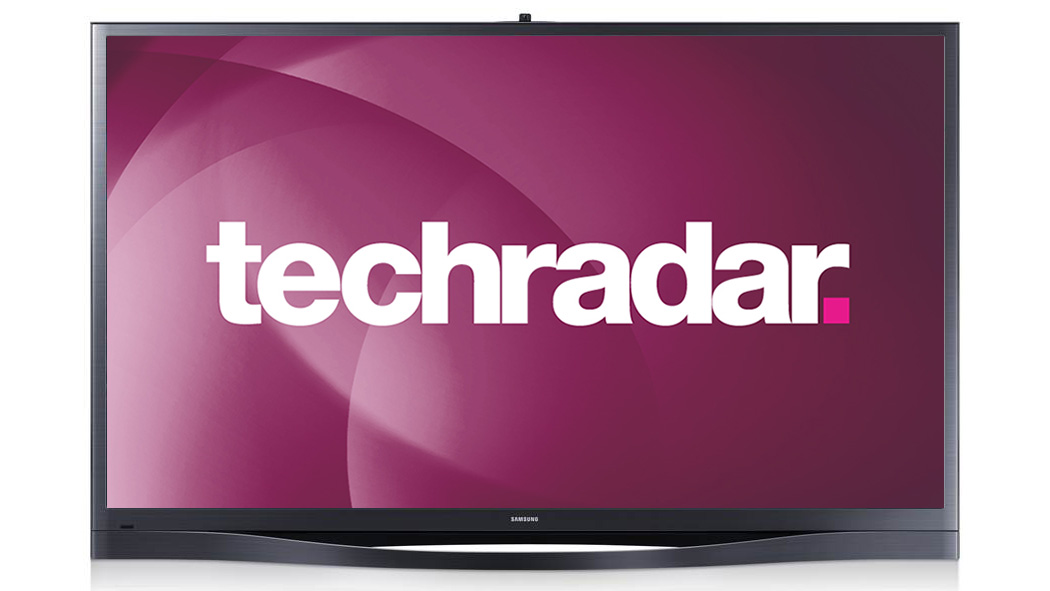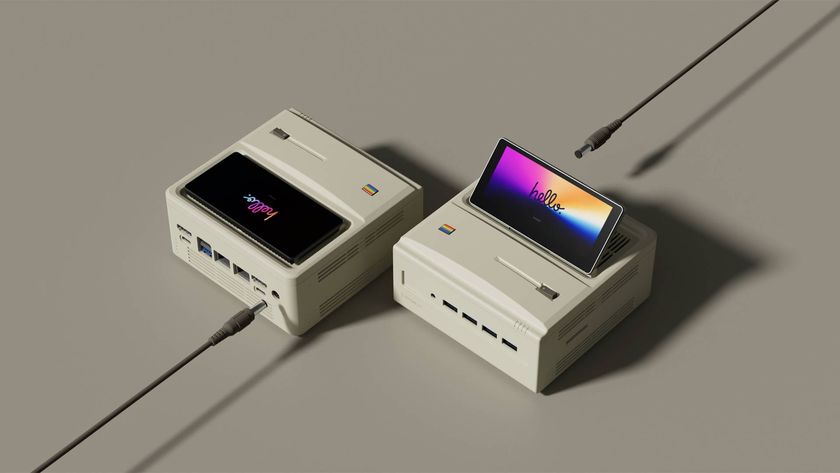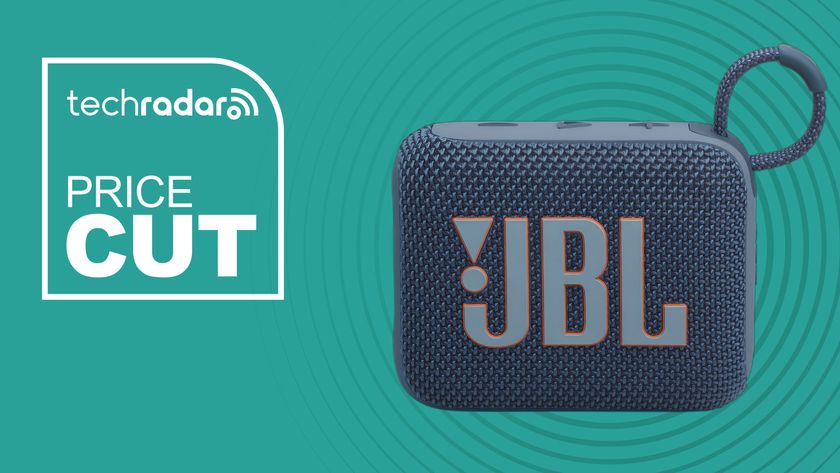Why you can trust TechRadar
Compared with the uber-svelte profiles of Samsung's flagship LCD TVs this year, the PS64F8500 is no shrinking violet. The deep grey frame around its colossal screen is positively chunky by today's TV standards.
And although the unusual open-framed elliptical and neckless support stand onto which the TV rests is stylish in its own way, it doesn't really detract from the sense of the Samsung PS64F8500 being a very considerable presence indeed for your room to have to accommodate.
Tucked away on the huge expanse of the Samsung PS64F8500's rear is a predictably strong set of connections, dominated by four HDMIs capable of receiving 3D feeds (two pairs of active shutter glasses are included free). There are also connections for Freesat HD and Freeview HD tuners, three USB ports and both LAN and built-in WLAN network support.
You can use the USBs for recording from the digital tuners to compatible USB HDDs, or for playing back a wide range of video, photo and music files from USB storage devices.
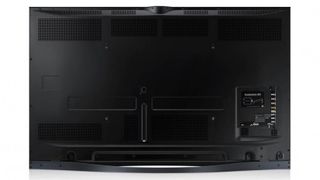
The same sort of files can be streamed from any DLNA computers on your network, plus, of course, the network connections give you access to both the online world at large via a built-in web browser or - more usefully - Samsung's ring-fenced but still pretty colossal smart TV service.
So far as content on its smart TV service is concerned, Samsung has now comfortably overhauled its rivals - even one-time champ Sony - with the amount of online video services it supports. Particularly noteworthy is the fact that Samsung is currently the only TV brand offering all of the UK's main catch-up TV services - including the still rare 4OD and ITV Player.
It also supports a striking array of subscription services, including Lovefilm, Blinkbox, Netflix, Acetrax, as well as an excellent Curzon platform devoted to a strong range of art house movies and even one devoted to recordings of well-known theatrical plays.
There's a plethora of much less significant apps too, combining information, trivia, basic games and news. There are one or two diamonds tucked away amid the rough with these, but for much of the time these second-string apps serve merely as a reminder that quality always trumps quantity.
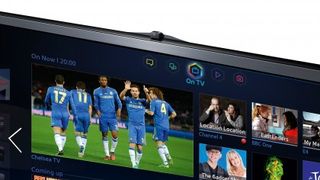
With this in mind, though, it's nice to see that Samsung hasn't automatically crammed loads of its smaller apps onto your main app menu. Instead you have to download them from a cloud-based library if you want them, so that you're not faced daily with row after row of app clutter.
Samsung has also improved the presentation of its smart services by introducing a new multiple hub approach, where you can scroll easily between five different content-link screens: one for TV, one for on-demand film and TV, one for your own multimedia, one for social media services, and one for all Samsung's apps.
As well as a standard Samsung remote control, you get a very handy second remote sporting a touchpad and reduced button layout, as well as a built-in mic to support the TV's voice recognition system.
We've tended to be dismissive of this in the past, feeling it was rather gimmicky and too unreliable to be useful. Typically, though, Samsung appears to have merely taken such criticisms as a spur to try harder, with the result that recent firmware updates have genuinely started to make the idea of controlling your TV by talking to it worth considering.
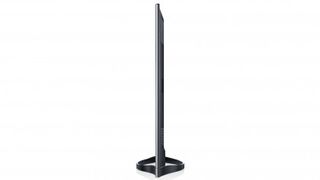
It's particularly useful now as a shortcut for accessing content; for instance, you can just say 'Show me Netflix' at any point and the app will load without any scrolling through menus. Or you can ask the TV to 'show films starring Tom Cruise' and it instantly searches many of its broadcast, online and on-demand services before presenting a list of options you can select simply by speaking the number of the option you're interested in.
There are still moments where the recognition gets things wrong of course, and there's also an issue to do with the voice recognition's use of a cloud-based system, whereby sometimes the TV doesn't appear to hear you because it fails to connect to the network fast enough.
There's also an initial period of resistance to the whole idea of talking to your TV that some people may never overcome. Though even here Samsung is working hard to reduce this particular barrier by introducing an on-TV tutorial due to go live in the next couple of months.
The Samsung PS64F8500 additionally supports gesture control, using a built-in camera you can also use for Skype calls.
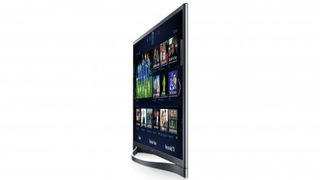
Again this was once pretty unusable, thanks to its habit of failing to recognise or track your hand properly, its fussiness when it came to trying to select on-screen options, and the sheer amount of fatigue it caused.
But again Samsung has responded to such criticisms in a positive way, having just demonstrated to us a new firmware update due to roll out soon that offers vastly improved - and faster - cursor tracking of your hand movements, a seemingly much more effective gesture recognition system that enables you to do everything with your arm resting on your chair rather than waving around fatiguingly in the air, and even a new Thumbs Up gesture recognition so you can make recommendations about things you've watched.
Perhaps the single most significant thing about the latest Samsung smart TV engine, though, is its ability to track the TV shows and on-demand content you watch so that it can build up a profile of what you like to watch and then make recommendations accordingly.
These recommendations appear on the home TV screen when you select it, or you can speak to the TV and ask it to recommend programmes it thinks you'll like.
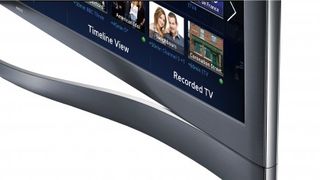
There is an inevitable catch with this system in that it takes 2-3 months for the TV to really get a close feel for your favourite content, leaving you in the meantime sometimes feeling bewildered about some of the recommendations it makes. But we guess you just need to stick with it.
One last smart feature to mention is the way the TV enables you to control it via Samsung apps for iOS and Android devices, additionally enabling you to share multimedia between your devices and the TV, and stream video from the TV to the Android or iOS app.
The Android app also enables you to watch something from a second tuner while the rest of your family watches the main tuner on the TV.
The only problems here are that you have to use multiple apps to achieve everything that's possible rather than having a single 'one-stop' app, and that you're given no guidance anywhere over what apps you need and how to set them up. We only found out everything via regular communications with Samsung's technical people.
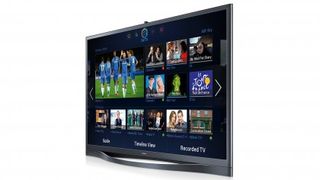
Leaving the impressive and ever-improving Smart Engine behind, the Samsung PS64F8500 sports a comprehensive range of picture adjustments and calibration tools, including all the gamma and colour management tools even the most serious of tinkerers - or a professional calibrator - could reasonably hope to find.
It's well worth dwelling for a moment, too, on some of the major improvements Samsung has introduced to the plasma panel at the Samsung PS64F8500's heart, because these really do have a major bearing on its performance, as we're about to discover.
For starters, a new Real Black Pro Filter in the screen soaks up more ambient light than previous iterations, enabling black levels to look deeper on the screen and light to emerge from the screen more efficiently and potently.
Samsung has also been able to speed up its panel response time so that it can reach higher brightness peaks in real time, as well as introducing a reworked discharge waveform that gives a further boost in contrast by enabling plasma cells to go darker faster.
Brightness has been further improved, meanwhile, by increasing the panel's active discharge space - meaning that more of the screen area can receive light from the plasma cells, by introducing Magnesium Oxide into its conduction materials to boost energy efficiency, and by deploying an improved discharge gas in the plasma chambers.
John has been writing about home entertainment technology for more than two decades - an especially impressive feat considering he still claims to only be 35 years old (yeah, right). In that time he’s reviewed hundreds if not thousands of TVs, projectors and speakers, and spent frankly far too long sitting by himself in a dark room.
